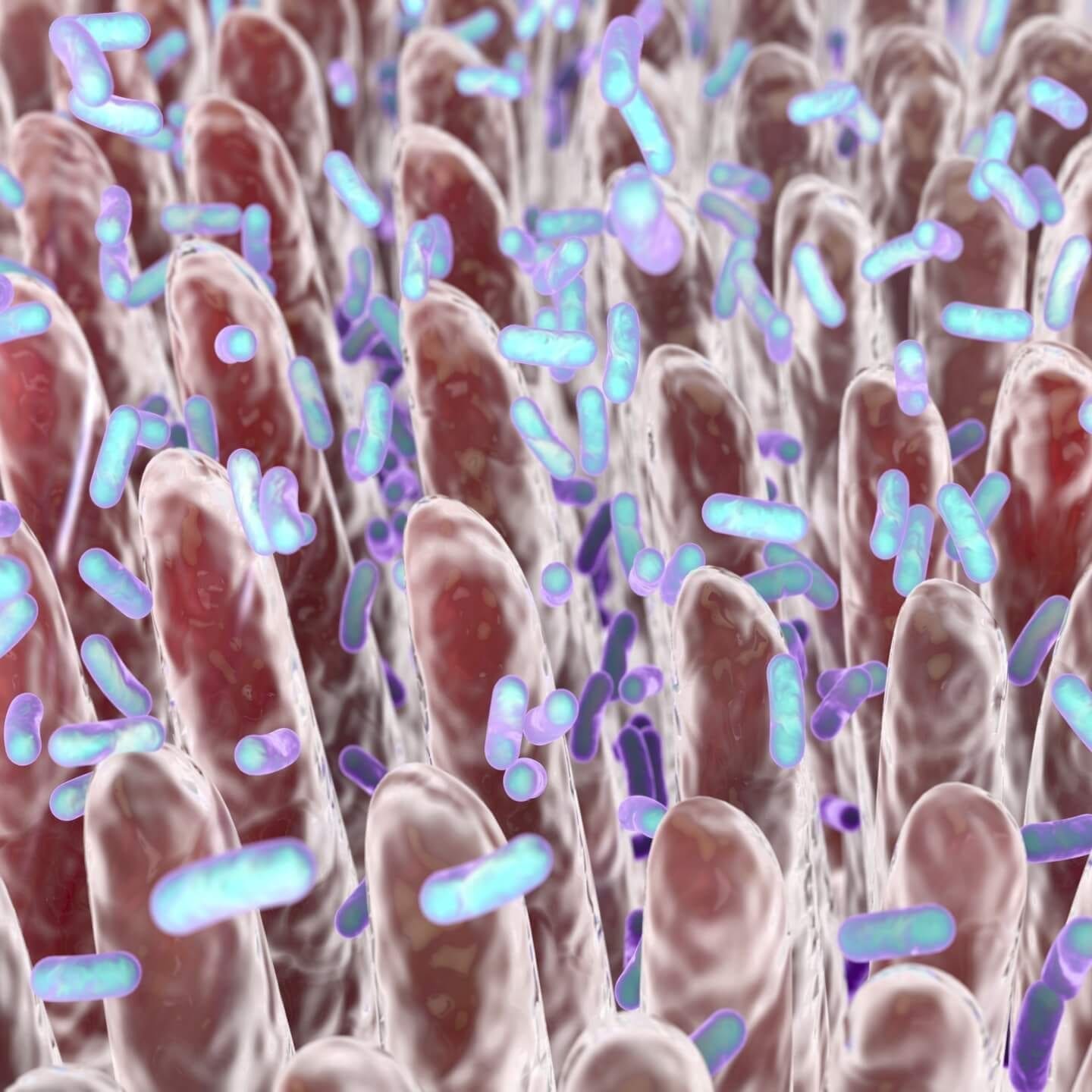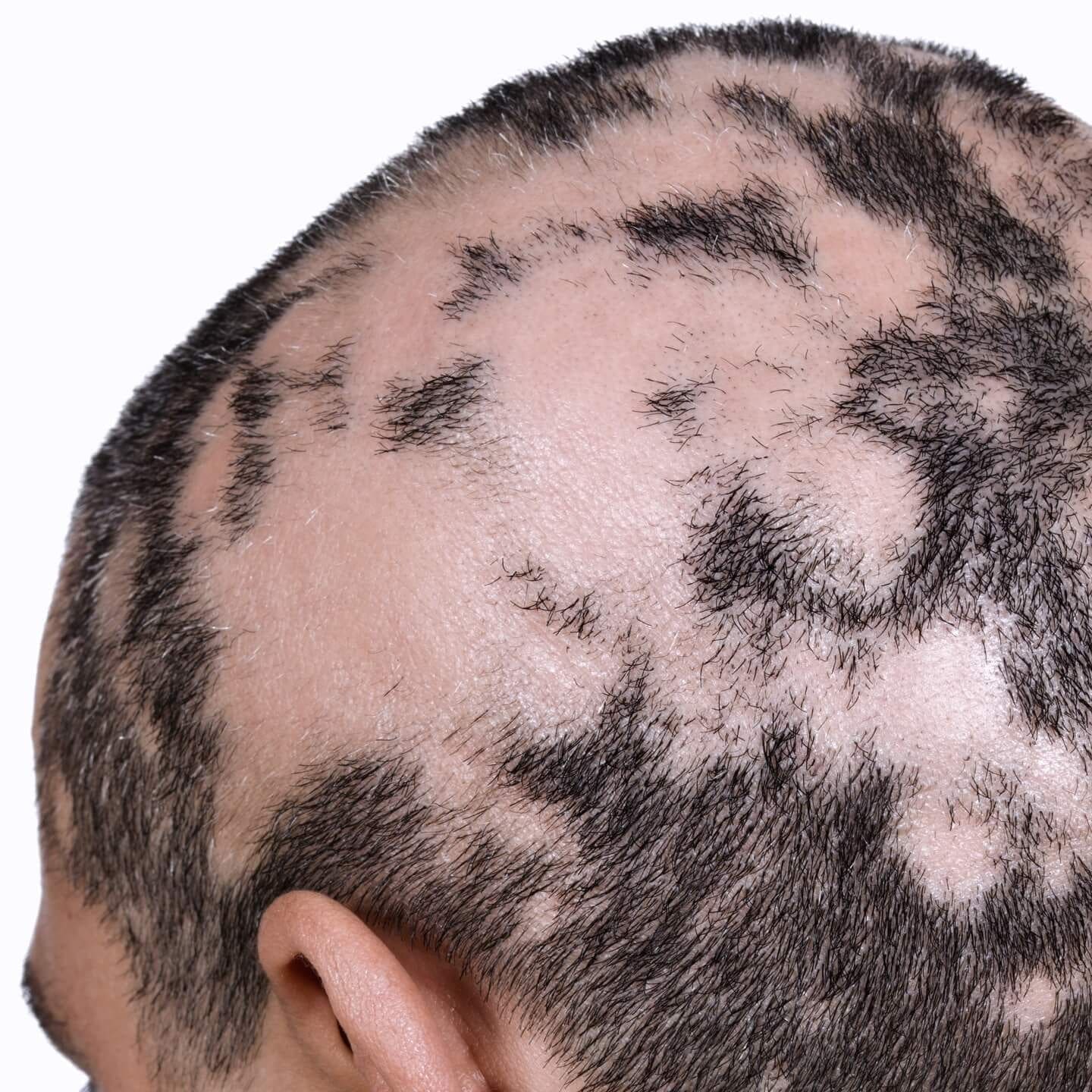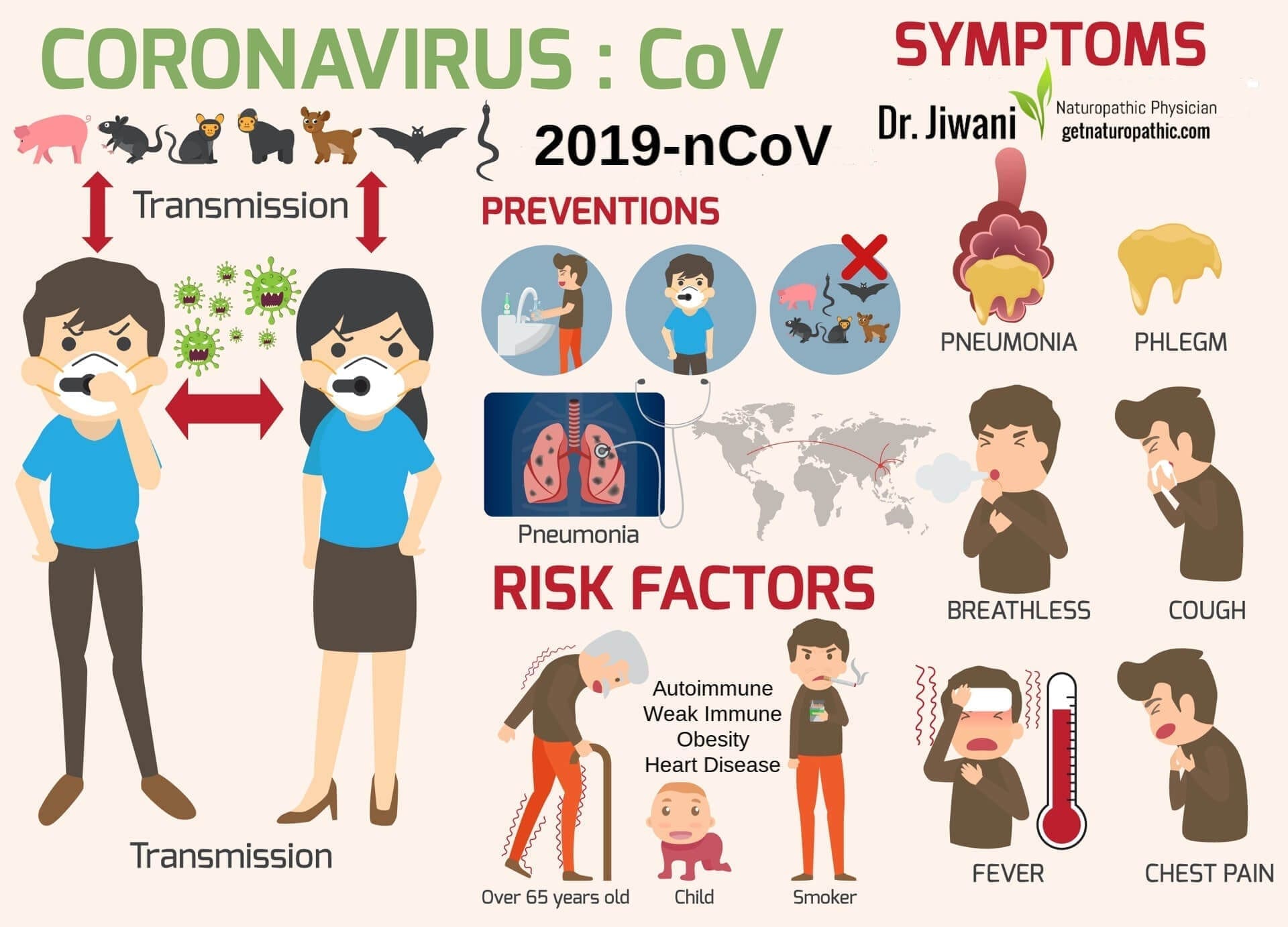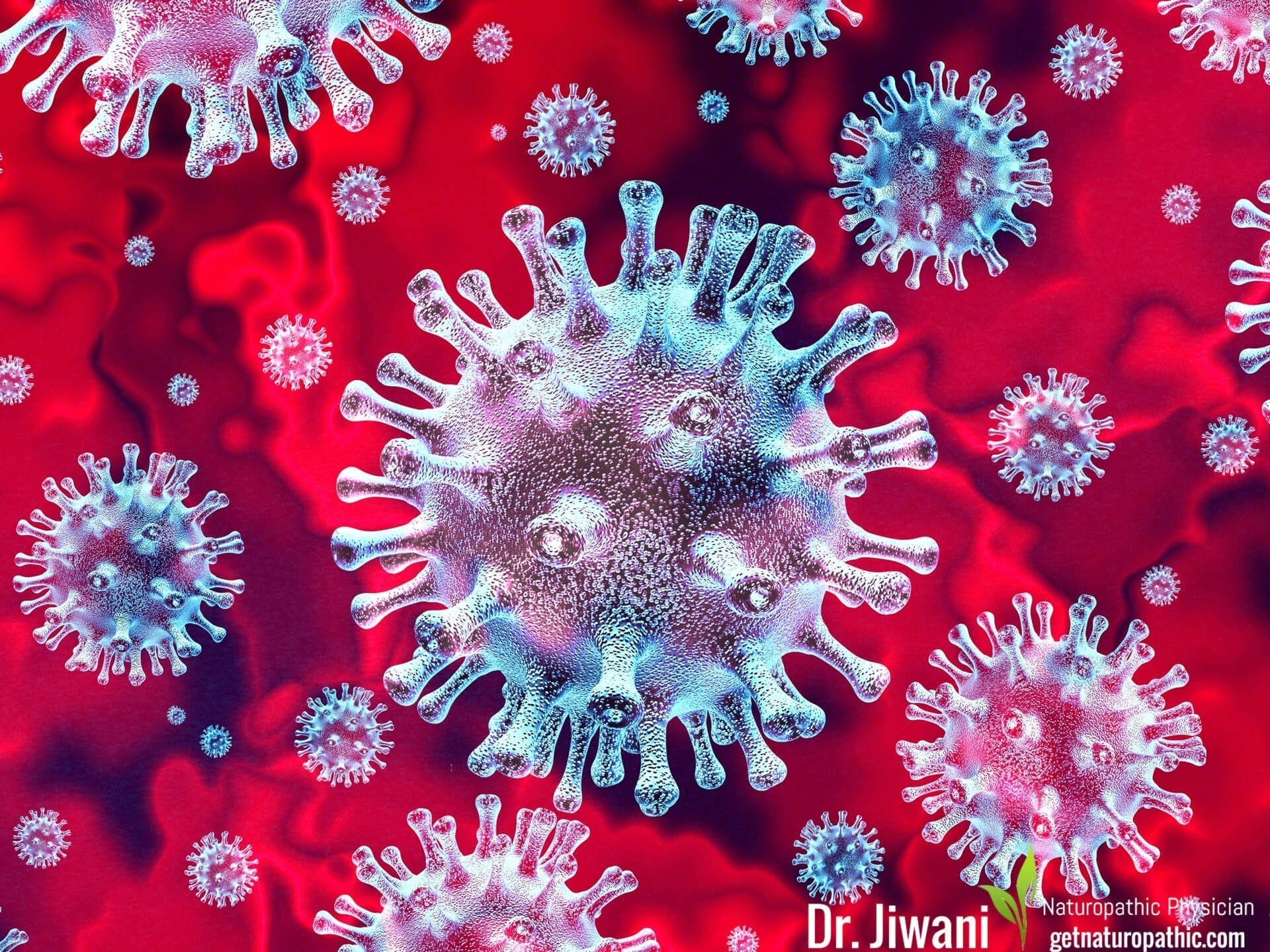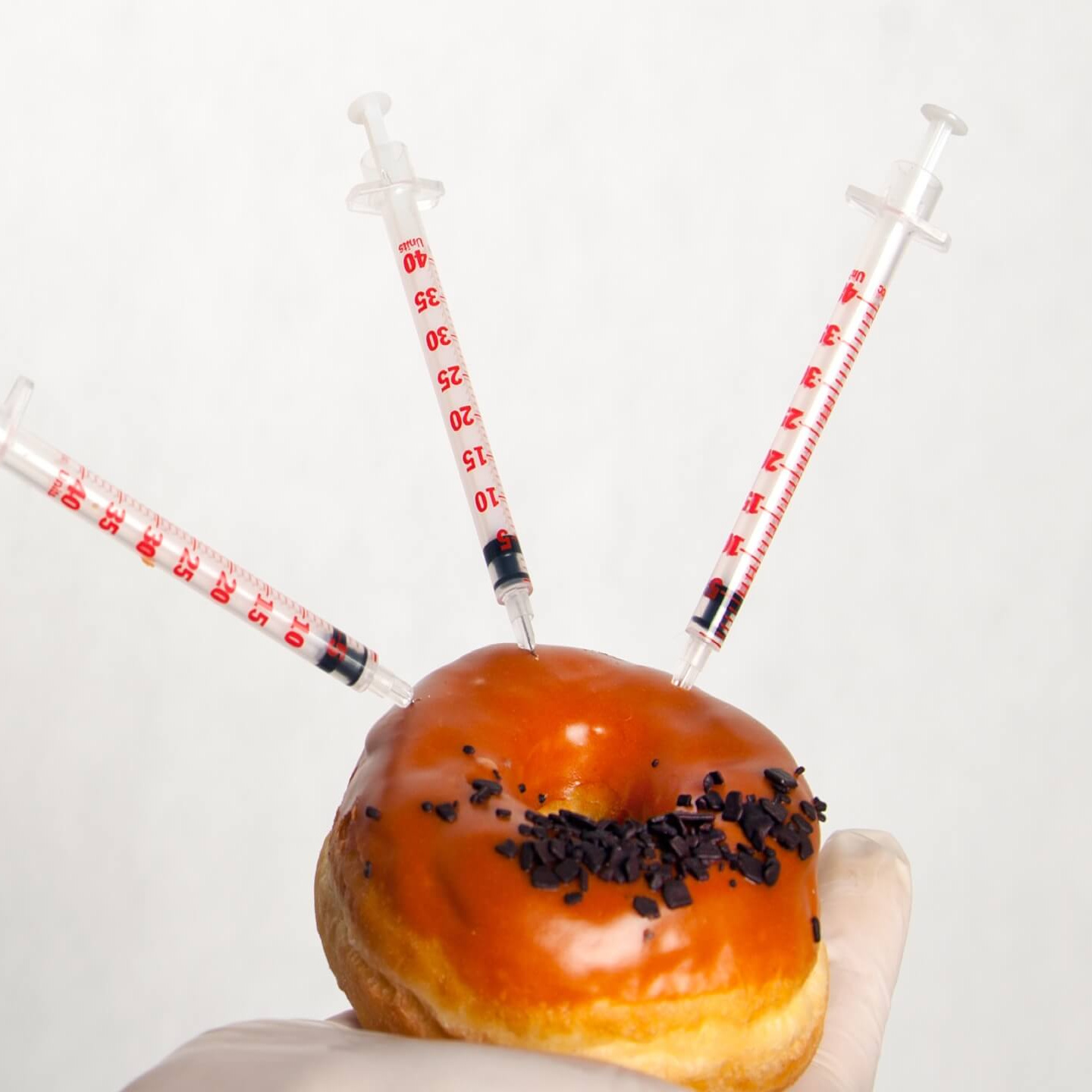Home »
Popular Posts
Coronavirus: Symptoms, Prevention & Treatment of Novel Coronavirus 2019-nCoV
Naturopathic Nuggets about 2019 Novel Coronavirus (2019-nCoV)
- The 2019 Novel Coronavirus has been linked to an outbreak of pneumonia originating in Wuhan, China
- Confirmed cases globally have reached to 28,265 with 565 deaths
- Countries with 2019-nCoV infection include most of Asia, the US, Australia, Germany, France, United Arab Emirates and Canada.
- 2019 Novel Coronavirus infection shows as fever, cough, shortness of breath, breathing difficulties and respiratory symptoms
- While most patients have mild symptoms, more severe cases show pneumonia, severe acute respiratory syndrome, kidney and multiple organ failure and even death.
- Patients with chronic underlying diseases such as diabetes, cardiovascular (heart) disease, lung diseases, cerebrovascular (brain) diseases show a higher risk of death.
- You are at greater risk for infection with 2019 Novel Coronavirus (2019-nCoV) if you suffer from old age, obesity, pregnancy, weakened immunity, long term use of immunosuppressive agents, autoimmune diseases or co-infection of bacteria & fungi (Candida albicans or systemic yeast infection)
- So far the risk of contracting the disease in North America is low, although prevention is key
- The 2019 Novel Coronavirus (2019-nCoV) is thought to be spread through respiratory droplets
- Prevention includes frequent hand washing, avoid touching your face with unwashed hands, avoid contact with those who are sick, keeping a social distance of six feet from those who are coughing and sneezing, and stay at home if you are symptomatic.
This article is dated February 7th, 2020.
Coronavirus: What is it?
The Coronavirus is a class of common viruses that cause varying diseases in animals, birds and humans. When hoofed animals such as cows and pigs are infected by coronavirus, they get diarrhea. When humans are infected, the virus attacks the breathing system, ranging from cold-like symptoms to bronchitis and pneumonia.
The Coronaviruses have a crown or halo of spikes (the infecting part) that project out from the surface of the virus. The Coronavirus is the largest of RNA viruses, which spread and attack efficiently due to their small package of DNA and a high rate of mutation.
Types of Coronavirus
In humans, the Coronavirus mainly affects the respiratory system. Historically, Coronaviruses manifest with mild benign symptoms, such as the common cold, but the past decade has brought about three types of Coronavirus that are causing bronchitis, pneumonia, respiratory failure and even death. Examples of such Coronaviruses are Severe Acute Respiratory Syndrome (SARS), Middle East Respiratory Syndrome (MERS) and the recent 2019 Novel Coronavirus (2019-nCoV).
Coronavirus SARS-CoV: Severe Acute Respiratory Syndrome (SARS)
Severe Acute Respiratory Syndrome (SARS) began in southern China ultimately from bats to civets to humans. SARS caused over 8,000 cases, 774 deaths in 17 countries, with a 10% fatality rate, according to the World Health Organization. SARS had an average incubation period of 4-6 days (1-14 days) with a fever 38 °C (100 °F) and flu-like symptoms that led to difficulty breathing and pneumonia.
Coronavirus MERS-CoV: Middle East Respiratory Syndrome (MERS)
Middle East Respiratory Syndrome (MERS) is also known as the Camel Flu. MERS was also derived from bats but spread to humans through camels. Because of this, it started in Saudi Arabia, and most cases were around the Arabian Peninsula with spread to South Korea via travellers. MERS ranged from mild to severe symptoms of fever, cough, shortness of breath and diarrhea. Ultimately, MERS was limited to approximately 2,500 cases reported globally, 858 deaths, with a 34% fatality rate, according to the World Health Organization.
Coronavirus 2019-nCoV: 2019 Novel Coronavirus (2019-nCoV)
Since December 2019, an outbreak of pneumonia has been linked to the 2019 Novel Coronavirus (2019-nCoV). This new strain of coronavirus started from Wuhan, the capital of Hubei province, in the People’s Republic of China. As of February 7h, 2020, the 2019 Novel Coronavirus has caused 28,265 cases globally with 565 deaths. Currently, multiple confirmed cases have been found in Asia, the US, Australia, Germany, France, United Arab Emirates and Canada. Currently, Canada has five confirmed cases and two pending. British Columbia has two cases with two pending.
Coronavirus (2019-nCoV): What are the Symptoms?
The World Health Organization states that common signs of Novel Coronavirus (2019-nCoV) infection include:
- Respiratory Symptoms
- Fever
- Cough
- Shortness Of Breath
- Breathing Difficulties
Most patients suffer mild symptoms that resolve. In more severe cases, infection can cause pneumonia, severe acute respiratory syndrome, kidney and multiple organ failure and even death. Symptoms can appear anywhere from 2 – 14 days after exposure.
Coronavirus (2019-nCoV): Descriptive Wuhan Study
A descriptive study published in the Lancet January 30, 2020 on Epidemiological and Clinical Characteristics of 99 Cases of 2019 Novel Coronavirus Pneumonia in Wuhan, China found over 80% of patients had a fever and cough, and 31% had shortness of breath. Other symptoms included muscle ache, headache, confusion, chest pain, and diarrhoea. Chest X-ray and CT Scans showed 75% of patients with pneumonia in both lungs, and 51% of patients had pre-existing diseases including diabetes and heart disease. The mortality rate for this patient population was 11% given individuals with weak immunity, bilateral pneumonia, age over 60 years, hypertension and a heavy smoking habit (Chen et al., 2020).
Coronavirus (2019-nCoV): Who is Vulnerable & Susceptible?
Viruses need a host as they live inside the cell. The most vulnerable or susceptible patients are those with weakened immunity from various factors. In fact, those with chronic underlying diseases such as diabetes, cardiovascular (heart) disease, lung diseases, cerebrovascular (brain) diseases show increased mortality (higher risk of death) which was also seen in MERS-CoV (Badawi & Ryoo, 2016)
Risk factors for becoming infected with Novel Coronavirus (2019-nCoV) are:
- Old Age (over 60 years old)
- Obesity
- Pregnancy
- Weakened Immunity
- Long Term Use of Immunosuppressive Agents
- Pre-Existing Diseases
- Autoimmune Diseases
- Brain Disease (Cerebrovascular)
- Diabetes
- Heart Disease (Cardiovascular)
- HIV / AIDS
- Lung Diseases
- Co-infections of Bacteria & Fungi (Candida albicans Yeast Infections)
Coronavirus (2019-nCoV): Predicting Mortality (Death)
Clinical features predicting mortality risk in patients with viral pneumonia: the MuLBSTA score is a system using six indexes to evaluate the risk of death in patients with viral pneumonia, including Multilobular Infiltration, Lymphopenia, Bacterial Co-Infection, Smoking History, HyperTension, and Age (Guo et al., 2019). This means your risk of death can be quantified and predicted based on how much of your lungs are affected, how weak or low your immune cells are, whether you have a secondary infection with bacteria or fungi, whether you smoke or have smoked in the past, whether you have high blood pressure and how old you are.
Coronavirus (2019-nCoV): Transmission or How does it Spread?
Like MERS and SARS, this new Coronavirus (2019-nCoV) has crossed species from animal to human. Although we don’t know which animal yet, this new Coronavirus (2019-nCoV) is spreading from human to human causing respiratory disease. Person to person spread is typically from close contact with an infected person in a household, workplace or health care centre. Exposure to the virus is thought to be from an infected person coughing or sneezing, close contact of approximately six feet, touching or shaking hands, or potentially touching objects contaminated with the virus, then touching the eyes, nose or mouth before washing hands.
Coronavirus (2019-nCoV): Asymptomatic Spread?
With most respiratory viruses, the more symptomatic you are, the more contagious. The concern with this new Coronavirus (2019-nCoV) is we are unsure how contagious the virus is, and reports of spreading from infected, NON-SYMPTOMATIC patients to those in close contact have occurred. A letter published in The New England Journal of Medicine by Rothe et al., January 30, 2020 discusses Transmission of 2019-nCoV Infection from an Asymptomatic Contact in Germany. The current outbreak may have greater implications if the asymptomatic recovered patients are still sources of 2019-nCoV infection. This means the new Coronavirus (2019-nCoV) may be more contagious, spreading during the incubation period and lasting longer in recovered patients, both of which exposes others unbeknownst to them. Still, the survival ability of this new Coronavirus (2019-nCoV) has yet to be proven through viral culture.
Coronavirus (2019-nCoV): Incubation Period
An incubation period is the time from infection to symptoms. To be conservative, the World Health Organization recommends assuming a 14 day incubation period for this new Coronavirus (2019-nCoV) given the information on MERS and SARS. Viruses can’t last long outside the body, so it is deemed safe to receive packages and letters from China and other infected areas. Currently, there is no evidence that cats and dogs have been infected or have spread this new Coronavirus (2019-nCoV).
Coronavirus (2019-nCoV): Diagnosis
Canada’s Response to the 2019 Novel Coronavirus (2019-nCoV):
“The Public Health Agency of Canada (PHAC) is working with provinces, territories and international partners, including the World Health Organization, to actively monitor the situation and respond to this outbreak. Canada’s Chief Public Health Officer of Canada is in close contact with provincial and territorial Chief Medical Officers of Health to ensure that any cases of 2019-nCoV occurring in Canada continue to be rapidly identified and managed in order to protect the health of Canadians.
Canada’s National Microbiology Laboratory (NML) has developed a real-time reverse transcription-polymerase chain reaction (rRT-PCR) test that can diagnose 2019-nCoV from clinical specimens. NML is working collaboratively with Canadian provincial public health laboratories to ensure there is additional testing capacity in multiple jurisdictions.
Diagnostic testing for 2019-nCoV is available at the BC Centre for Disease Control (BCCDC) Public Health Laboratory (PHL) and will be available in the coming weeks at front line laboratories. Testing is available for patients with compatible symptoms (e.g. fever, cough, or difficulty breathing) AND history of travel to affected areas of China within two weeks prior to illness onset or other index of suspicion (e.g,. contact with an ill person with such travel history).
At this time, NML also supports the use of other international assays that have been posted publicly. Further collaborative scientific studies to investigate the virus are underway.”
Coronavirus (2019-nCoV): Preventing the Spread
Since there is no current vaccine to prevent 2019-nCoV infection, prevention is critical to avoid exposure with the following:
- Wash your hands frequently with soap & water for 20 seconds minimum to avoid virus spread, after using the bathroom, after blowing your nose, coughing, sneezing and before eating; Use alcohol-based sanitizer if soap & water unavailable
- Avoid touching your eyes, nose and mouth with unwashed hands
- Cover your mouth & nose when coughing or sneezing; use a tissue and discard immediately or your inner elbow/sleeve
- Stay home if you are sick except for medical attention: Avoid public areas and public transportation.
- Call ahead before your medical appointment if you are sick, so they can prepare to protect others from infection
- Separate yourself from others in your home, if you are sick; if possible to a separate room & bathroom if possible
- Avoid sharing household items with others if you are sick; wash thoroughly after use
- Clean & disinfect frequently touched areas, objects, surfaces if you are sick (e.g. counters, tabletops, doorknobs, bathroom fixtures, toilets, phones, keyboards, tablets and bedside tables) once per day with regular household disinfectant containing 1 part bleach to 9 parts water
- Flush your toilet with the lid down as the virus may also be present in the stool
- Seek medical attention immediately if your symptoms get worse (difficulty breathing): call ahead to the ER or your doctor’s office and tell them about your suspected infection
- Avoid contact with pets & other animals if you are suspected to have an 2019-nCoV infection
- Avoid unprotected contact with farm or wild animals
- Avoid travel while sick
For travellers visiting China in the last 14 days and symptomatic with fever, cough and/or difficulty breathing:
- Seek Medical Attention Immediately: Call ahead to the ER or your doctor’s office and tell them about your recent travels and symptoms
Coronavirus (2019-nCoV): Risk to Canadians
The Public Health Agency of Canada (PHAC) has assessed the public health risk associated with this new Coronavirus 2019-nCoV as LOW for Canada.
Overall, the risk to Canadian travellers abroad is LOW. The risk to Canadian travellers to China is assessed as HIGH. The Government of Canada recommends AVOIDING:
- all non-essential travel to China
- all travel to Hubei Province, China, including Wuhan city
Public health risk is continually reassessed as new information becomes available.
Coronavirus (2019-nCoV): Prevention through Optimal Health
You are only as strong as your weakest link. From a naturopathic perspective, that is the function of your immunity. This is not to say that you would not get sick at all, but to have the ability to overcome it quickly and effectively with minimal to no complications. The Flu is a good example. Many people get the Flu, but those at risk for complications are typically over 65 years, pregnant women, children under 5 years, infants under 2 years and anyone with chronic medical issues including diabetes, heart disease, asthma, autoimmunity or those on long term immunosuppressive drugs.
Other than avoiding exposure which may become difficult over time if this new Coronavirus (2019-nCoV) continues to spread, one thing you can do is to work towards optimal health. I should clarify that this in no way constitutes treatment specifically for the Novel Coronavirus (2019-nCoV) but rather discusses the importance of improving general health and strengthening your natural immunity with respect to the many viral infections we are exposed to on a daily basis.
The naturopathic perspective to optimal health is a multi-pronged approach, and may require the assistance of a licensed naturopathic physician. This application embraces treating the various potential causes of poor health including, but not limited to:
-
- Normalizing Autoimmunity
- Supporting Weakened Immunity
- Addressing Underlying Nutrient Deficiencies
- Addressing Any Hormonal Imbalances:
- Address Any Sleep Issues
- Addressing Any CoMorbid Conditions
- Identify & Eliminate Food Allergies
- Rectify Dysbiosis
- Heal Leaky Gut
- Improve Digestion
- Enhance Nutrient Absorption
- Improve Nutrient Status
- Minimize Toxic Exposure:
-
- Drink Filtered Water
- Opt for Organic Fruits & Vegetables
- Avoid Hidden Food Additives
- Avoid Sugar & Excess Carbs (1 tsp sugar or starch equivalent weakens immunity by 50% which takes 6 hours to restore)
- Opt for Healthy Sugar Substitutes
- Minimize / Eliminate Coffee & Caffeine
- Minimize / Eliminate Alcoholic Beverages
-
Coronavirus (2019-nCoV): Potential Treatments
Due to the recent outbreak of 2019 Novel Coronavius (2019-nCoV) there is no current treatment or vaccination. However, scientists have been testing existing antiviral drugs for effectiveness against 2019-nCoV as it is closely related to SARS-CoV. Wang et al., Feb 4, 2020 evaluated five FDA approved antiviral drugs against 2019-nCoV and found remdesivir and chloroquine to be highly effective in controlling 2019-nCoV infection in vitro. Chloroquine is already widely used as an anti-malarial and autoimmune disease drug, that is cheap and has been safely used for more than 70 years. Remdesivir is recognized for its antiviral action against RNA viruses including SARS & MERS-CoV. Although only tested on non-human primates, preliminary studies have shown virus inhibition in human liver cells sensitive to 2019 Novel Coronavirus. Currently it is being developed to treat the Ebola virus infection. Human application has yet to occur.
Coronavirus (2019-nCoV): Resources
The information about the Novel Coronavirus is continually being reassessed. See the resources to keep you abreast of the current status of this public health threat:
-
- World Health Organization
- World Health Organization Data Source & Map
- Centers for Disease Control & Prevention
- Government of Canada 2019 Novel Coronavirus: Latest Travel Advice
- Government of Canada 2019 Novel Coronavirus: Outbreak Update
- BC Centre for Disease Control
- Government of Ontario
- Public Health Ontario
- Infection Prevention and Control Canada
Coronavirus (2019-nCoV): Latest Research
Corman VM, Landt O, Kaiser M, Molenkamp R, Meijer A, Chu DKW, et al. Detection of 2019 novel coronavirus (2019-nCoV) by real-time RT-PCR. Eurosurveillance. 2020 Jan 23;25:2000045.
Evaluating the use of Real-time reverse-transcription PCR (RT-PCR) assay to detect 2019 Novel Coronavirus
Zhu N, Zhang D, Wang W, Li X, Yang B, Song J, et al. A novel coronavirus from patients with pneumonia in China, 2019. New England Journal of Medicine. 2020 Jan 24 [Epub ahead of print].
Genome sequencing from three samples of 2019 Novel Coronavirus found the virus to be distinct from SARS-CoV and MERS-CoV but similar to a bat SARS-like CoV
Huang C, Wang Y, Li X, Ren L, Zhao J, Hu Y, et al. Clinical features of patients infected with 2019 novel coronavirus in Wuhan, China. Lancet. 2020 Jan 24 [Epub ahead of print].
Case series of 41 patients hospitalized with laboratory confirmed 2019-nCoV in Wuhan; 66% direct exposure to Huanan seafood market, 73% male, average age 49 years, 32% underlying diseases, 66% lymphopenia, fever (98%), cough (76%), dyspnea (55%), myalgia or fatigue (44%), 100% had pneumonia, 15% died.
Chan JF, Yuan S, Kok KH, To KK, Chu H, Yang J, et al. A familial cluster of pneumonia associated with the 2019 novel coronavirus indicating person-to-person transmission: a study of a family cluster. Lancet. 2020 Jan 24 [Epub ahead of print].
Case series of a family visiting Wuhan, 7 yo child wearing mask did not become sick, 10 yo child infected was asymptomatic, had abnormal CT Scan, positive PCR test, incubation period 3 – 6 days, 2019 Novel Coronavirus sequenced was related to bat SARS-like coronavirus.
Phan LT, Nguyen TV, Luong QC, Nguyen TV, Nguyen HT, Le HQ, et al. Importation and human-to-human transmission of a novel coronavirus in Vietnam. New England Journal of Medicine. 2020 Jan 28 [Epub ahead of print].
Case of 2019 Novel Coronavirus transmission from Wuhan father to Vietnam son within three days of exposure
Read JM, Bridgen JRE, Cummings DAT, Ho A, Jewell CP. Novel coronavirus 2019-nCoV: early estimation of epidemiological parameters and epidemic predictions. medRxiv. 2020 Jan 28 [Epub ahead of print].
Wang W, Tang J, Wei F. Updated understanding of the outbreak of 2019 novel coronavirus (2019-nCoV) in Wuhan, China. Journal of Medical Virology. 2020 Jan 29 [Epub ahead of print].
Internet searches revealed confirmed 1,975 cases of infection of 2019 Novel Coronavirus in China mainland with 56 deaths as of January 26, 2020. Mortality rate of 2.84% found with median 14 days from first symptom to death, shorter in those over 70 years.
Chen N, Zhou M, Dong X, Qu J, Gong F, Han Y, et al. Epidemiological and clinical characteristics of 99 cases of 2019 novel coronavirus pneumonia in Wuhan, China: a descriptive study. Lancet. 2020 Jan 29 [Epub ahead of print].
Case Study of 99 patients hospitalized with the 2019 Novel Coronavirus in a Wuhan, China hospital January 1 – 20, 2020
Lu R, Zhao X, Li J, Niu P, Yang B, Wu H, et al. Genomic characterisation and epidemiology of 2019 novel coronavirus: implications for virus origins and receptor binding. Lancet. 2020 Jan 29 [Epub ahead of print].
Genome testing to analyze nine patient samples (eight were exposed to the Huanan Seafood market) in comparison to SARS-CoV, MERS-CoV and bat SARS-like. Sequencing suggests they were the same virus, closely related to a bat SARS-like CoV.
Li Q, Guan X, Wu P, Wang X, Zhou L, Tong Y, et al. Early transmission dynamics in Wuhan, China, of novel coronavirus-infected pneumonia. New England Journal of Medicine. 2020 Jan 29 [Epub ahead of print].
Case series of 425 cases of 2019-nCoV in the early phase of the outbreak in Wuhan, China
Rothe C, Schunk M, Sothmann P, Bretzel G, Froeschl G, Wallrauch C, et al. Transmission of 2019-nCoV infection from an asymptomatic contact in Germany. New England Journal of Medicine. 2020 Jan 30 [Epub ahead of print].
A case of 2019 Novel Coronavirus spreading from Germany to Asia. Infection spread occurred during the incubation period of a patient who previously had symptoms briefly. Transmission dynamics may need to be reassessed given that asymptomatic patients could be potential sources of 2019-nCoV infection.
Backer JA, Klinkenberg D, Wallinga J. The incubation period of 2019-nCoV infections among travellers from Wuhan, China. Eurosurveillance. 2020 Jan 30 [Epub ahead of print].
Incubation period based on 88 Wuhan cases, estimated at 6.4 days with a range of 2 – 11 days
Holshue ML, DeBolt C, Lindquist S, Lofy KH, Wiesman J, Bruce H, et al. First case of 2019 novel coronavirus in the United States. New England Journal of Medicine. 2020 Jan 31 [Epub ahead of print].
First case of 2019 Novel Coronavirus reported in the US. Virus found in the stool.
Wu JT, Leung K, Leung GM. Nowcasting and forecasting the potential domestic and international spread of the 2019-nCoV outbreak originating in Wuhan, China: a modelling study. Lancet. 2020 Jan 31 [Epub ahead of print].
Modeling study examines exported cases with travel patterns to gauge the impact of the 2019 Novel Coronavirus outbreak in Wuhan and other major cities in China, forecasting the extent of domestic & global public health risks of the epidemics.
This information is for educational purposes only and does not advocate self-diagnosis. Due to individual variability, consultation with a licensed health professional, such as a licensed naturopathic physician is highly recommended, prior to starting a natural treatment plan. If you have any symptomsFor further information, see Terms of our Website.
Related The Flu or Not the Flu: Differences between the Cold & Flu (When to Wait & When to Worry)
References
Advice for Public [Internet]. WHO.int. 2020 [cited 5 February 2020]. Available from: https://www.who.int/emergencies/diseases/novel-coronavirus-2019/advice-for-public
Backer JA, Klinkenberg D, Wallinga J. The incubation period of 2019-nCoV infections among travellers from Wuhan, China. Eurosurveillance. 2020 Jan 30 [Epub ahead of print].
Badawi A, Ryoo SG. Prevalence of comorbidities in the Middle East respiratory syndrome coronavirus (MERS-CoV): a systematic review and meta-analysis. International Journal of Infectious Diseases. 2016 Aug 1;49:129-33.
Belshaw R. What is special about RNA viruses? Trends in Ecology & Evolution. 2010;25(5):264-265.
Canada P. 2019 Novel Coronavirus: Outbreak Update – Canada.ca [Internet]. Canada.ca. 2020 [cited 5 February 2020]. Available from: https://www.canada.ca/en/public-health/services/diseases/2019-novel-coronavirus-infection.html
Chan JF, Yuan S, Kok KH, To KK, Chu H, Yang J, et al. A familial cluster of pneumonia associated with the 2019 novel coronavirus indicating person-to-person transmission: a study of a family cluster. Lancet. 2020 Jan 24 [Epub ahead of print].
Chen N, Zhou M, Dong X, Qu J, Gong F, Han Y, Qiu Y, Wang J, Liu Y, Wei Y, Yu T. Epidemiological and clinical characteristics of 99 cases of 2019 novel coronavirus pneumonia in Wuhan, China: a descriptive study. The Lancet. 2020 Jan 30.
Corman VM, Landt O, Kaiser M, Molenkamp R, Meijer A, Chu DKW, et al. Detection of 2019 novel coronavirus (2019-nCoV) by real-time RT-PCR. Eurosurveillance. 2020 Jan 23;25:2000045.
Coronavirus (Novel) [Internet]. BCCDC.ca. 2020 [cited 5 February 2020]. Available from: http://www.bccdc.ca/health-professionals/clinical-resources/coronavirus-(novel)
Coronavirus [Internet]. HealthLink BC. 2020 [cited 5 February 2020]. Available from: https://www.healthlinkbc.ca/health-feature/coronavirus
Coronavirus Infections | Coronavirus | MedlinePlus [Internet]. Medlineplus.gov. 2020 [cited 5 February 2020]. Available from: https://medlineplus.gov/coronavirusinfections.html
Coronavirus [Internet]. WHO.int. 2020 [cited 5 February 2020]. Available from: https://www.who.int/health-topics/coronavirus
Guo L, Wei D, WU Y, ZHOU M, ZHANG X, Li Q, Qu J. Clinical features predicting mortality risk in patients with viral pneumonia: the MuLBSTA score. Frontiers in Microbiology. 2019;10:2752.
Holshue ML, DeBolt C, Lindquist S, Lofy KH, Wiesman J, Bruce H, et al. First case of 2019 novel coronavirus in the United States. New England Journal of Medicine. 2020 Jan 31 [Epub ahead of print].
Huang C, Wang Y, Li X, Ren L, Zhao J, Hu Y, Zhang L, Fan G, Xu J, Gu X, Cheng Z. Clinical features of patients infected with 2019 novel coronavirus in Wuhan, China. The Lancet. 2020 Jan 24.
Li Q, Guan X, Wu P, Wang X, Zhou L, Tong Y, et al. Early transmission dynamics in Wuhan, China, of novel coronavirus-infected pneumonia. New England Journal of Medicine. 2020 Jan 29 [Epub ahead of print].
Lu R, Zhao X, Li J, Niu P, Yang B, Wu H, et al. Genomic characterisation and epidemiology of 2019 novel coronavirus: implications for virus origins and receptor binding. Lancet. 2020 Jan 29 [Epub ahead of print].
Middle East Respiratory Syndrome (MERS) [Internet]. En.wikipedia.org. 2020 [cited 5 February 2020]. Available from: https://en.wikipedia.org/wiki/Middle_East_respiratory_syndrome
Middle East Respiratory Syndrome (MERS) Coronavirus (MERS-CoV) [Internet]. World Health Organization. 2020 [cited 5 February 2020]. Available from: https://www.who.int/emergencies/mers-cov/en/
Novel Coronavirus 2019, Wuhan, China | CDC [Internet]. CDC.gov. 2020 [cited 5 February 2020]. Available from: https://www.cdc.gov/coronavirus/2019-nCoV/index.html
Phan LT, Nguyen TV, Luong QC, Nguyen TV, Nguyen HT, Le HQ, et al. Importation and human-to-human transmission of a novel coronavirus in Vietnam. New England Journal of Medicine. 2020 Jan 28 [Epub ahead of print].
Q&A on Coronaviruses [Internet]. WHO.int. 2020 [cited 5 February 2020]. Available from: https://www.who.int/news-room/q-a-detail/q-a-coronaviruses
Read JM, Bridgen JRE, Cummings DAT, Ho A, Jewell CP. Novel coronavirus 2019-nCoV: early estimation of epidemiological parameters and epidemic predictions. medRxiv. 2020 Jan 28 [Epub ahead of print].
Rothe C, Schunk M, Sothmann P, Bretzel G, Froeschl G, Wallrauch C et al. Transmission of 2019-nCoV infection from an asymptomatic contact in Germany. New England Journal of Medicine. 2020;.
Severe Acute Respiratory Syndrome (SARS) [Internet]. En.wikipedia.org. 2020 [cited 5 February 2020]. Available from: https://en.wikipedia.org/wiki/Severe_acute_respiratory_syndrome
Wang M, Cao R, Zhang L, Yang X, Liu J, Xu M et al. Remdesivir and chloroquine effectively inhibit the recently emerged novel coronavirus (2019-nCoV) in vitro. Cell Research. 2020;.
Wang W, Tang J, Wei F. Updated understanding of the outbreak of 2019 novel coronavirus (2019-nCoV) in Wuhan, China. Journal of Medical Virology. 2020 Jan 29 [Epub ahead of print].
WHO | Summary of Probable SARS Cases with Onset of Illness from 1 November 2002 to 31 July 2003 [Internet]. WHO.int. 2020 [cited 5 February 2020]. Available from: https://www.who.int/csr/sars/country/table2004_04_21/en/
Wu JT, Leung K, Leung GM. Nowcasting and forecasting the potential domestic and international spread of the 2019-nCoV outbreak originating in Wuhan, China: a modelling study. Lancet. 2020 Jan 31 [Epub ahead of print].
Zhu N, Zhang D, Wang W, Li X, Yang B, Song J, et al. A novel coronavirus from patients with pneumonia in China, 2019. New England Journal of Medicine. 2020 Jan 24 [Epub ahead of print].
This information is for educational purposes only and does not advocate self-diagnosis. Due to individual variability, consultation with a licensed health professional, such as a licensed naturopathic physician is highly recommended, prior to starting a natural treatment plan. For further information, see Terms of our Website.
Follow Dr. Jiwani
Popular Posts



